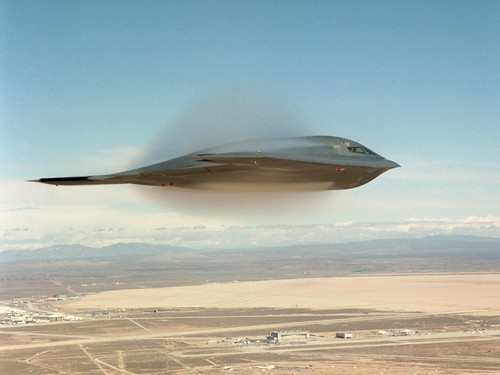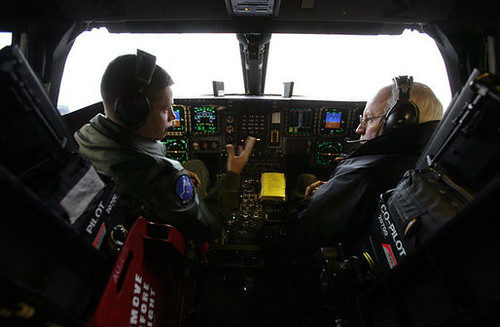EHF Satcom Upgrade For B-2 Stealth Bomber

The U.S. Defense Department’s Global Information Grid (GIG) and the doctrine of network-centric warfare are about the touch the B-2 Stealth bomber. Prime contractor Northrop-Grumman got the go-ahead to develop a system using extremely high frequency (EHF) satellite communications earlier this year. Now we read they got a nice contract to really get going on it:
Northrop Grumman Integrated Systems was awarded a $171 million Air Force contract to begin a major step in developing a new satellite communications system for the B-2 Spirit stealth bomber, the company said Monday.
This 62-month phase will be the first of three increments in developing and installing the communications system. Once all three increments are completed, the upgrade will allow the B-2 to send and receive battlefield information up to 100 times faster than its current satellite communications system, the company said.
This contract "provides significant momentum for the work Northrop Grumman and its subcontractors are doing to increase the B-2’s fighting effectiveness in the face of technological advances by our enemies," said Dave Mazur, vice president of Long Range Strike for Northrop Grumman’s Integrated Systems sector, in a statement.
The project will enhance the B-2’s satellite communications system from ultra high frequencies, known as UHF, to extremely high frequency, or EHF.
Most of the work will occur in Palmdale, where Northrop houses its B-2 program, spokesman Brooks McKinney said.
Known as a flying wing because of its unorthodox shape, the Spirit has stealth properties that block enemy detection of the plane.
First introduced into the Air Force’s fleet in 1993, the B-2 has been one of the nation’s most high-profile warplanes because of its technological advancement and success in conflicts.
The first increment will involve replacing the B-2’s flight management computers with a single processing unit developed by subcontractor Lockheed Martin Systems Integration in Owego, N.Y.
The next increment of the upgrade will enable the plane to process signals at EHF frequencies.
The final increment will integrate the EHF capabilities with the aircraft’s controls and displays.
The new satellite communications system also will allow the B-2 to connect easily to the U.S. Department of Defense’s Global Information Grid, a worldwide network of information systems, processes and personnel involved in processing information on demand to warfighters, policy makers and military support people, Northrop said.
The B-2’s new communications system will be compatible with current and future secure military satellite communications networks.
The modernization program is the latest in a series of Northrop’s B-2 upgrades. Other past or ongoing improvements include:
A bomb-rack assembly that allows the aircraft to deliver 80 independently targeted, 500-pound "smart" munitions, five times more than previously.
Application of a surface coating that has reduced B-2 maintenance time and improved operational readiness.
Installation of a line-of-sight tactical communications system to improve pilots’ ability to share targeting and threat information.
Installation of an advanced antenna providing more advanced imaging capabilities in the future. El Segundo-based Raytheon Space and Airborne Systems is developing that antenna.
After the SR-71 Blackbird, the B-2 is the coolest aircraft around. Vice President Dick Cheney got to sit in one last October. How cool is that?
